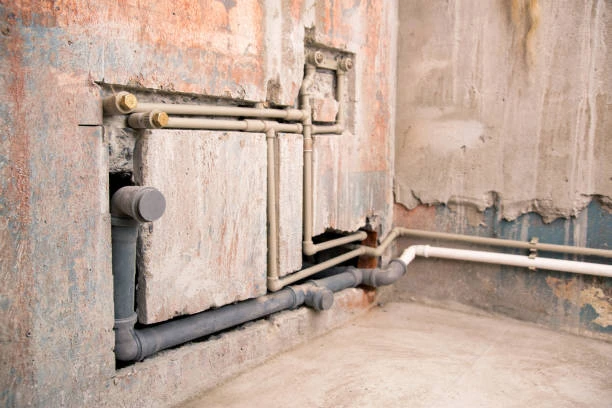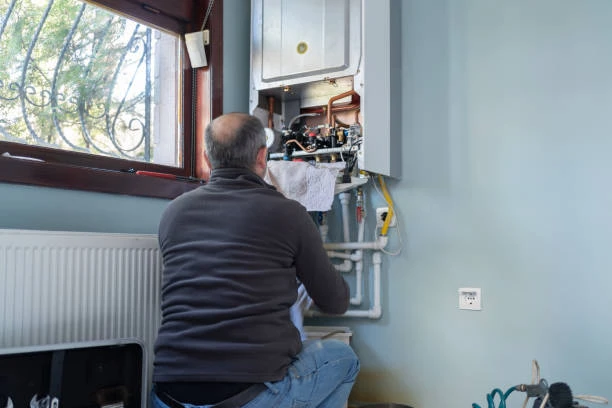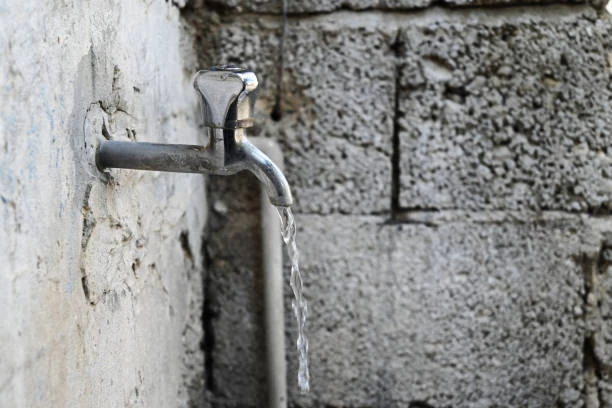
Precise Control of Copper Ball Valves in HVAC Systems
Copper ball valves, including safety valve variants, are critical components in HVAC systems, delivering precise flow control, durability, and reliability. These valves excel in regulating water, coolant, or gas flow, ensuring optimal performance in heating, ventilation, and air conditioning setups. Their corrosion resistance and robust design make them ideal for maintaining system efficiency. In this article, we explore the benefits of copper ball valves, their applications in HVAC systems, and how to select the right safety valve for your needs. We also provide a comparison with plastic valves, installation tips, and details about IFNS’s high-quality products that meet international standards.
Frequently Asked Questions About Copper Ball Valves
1. What is a copper ball valve?
A copper ball valve is a shut-off valve with a perforated ball that rotates to control the flow of liquids or gases in a system.
2. Why are safety valves made of copper used in HVAC systems?
Copper safety valves offer durability, corrosion resistance, and precise control, ensuring safe and efficient operation in HVAC setups.
3. Can all copper ball valves act as safety valves?
Not all are designed as safety valves; choose models with pressure relief features for HVAC safety applications.
4. How do I pick a high-quality safety valve?
Select valves made from pure copper, certified by standards like ISO, and produced by trusted brands like IFNS.
5. Are copper valves better than plastic valves for HVAC systems?
Yes, copper valves handle higher pressures and temperatures, while plastic valves may degrade under demanding conditions.
Definition and Features of Copper Ball Valves
Copper ball valves feature a hollow, perforated ball within a copper body that regulates fluid or gas flow. A quarter-turn of the handle opens or closes the valve, providing quick and precise control. Copper’s natural properties make these valves resistant to corrosion, capable of withstanding high temperatures, and durable under pressure. These characteristics ensure reliable performance in HVAC systems, where consistent flow control is essential.
Safety valve models within the copper ball valve family are designed to release excess pressure, protecting HVAC systems from damage. Their smooth internal surfaces reduce fluid resistance, improving energy efficiency, while copper’s antimicrobial properties ensure safety in systems handling potable water or sensitive fluids. The combination of precision and durability makes copper ball valves a top choice for HVAC applications.
Common Uses and Industries for Copper Ball Valves
Copper ball valves, including safety valve variants, serve a wide range of applications in HVAC systems across various industries. Common uses include:
Commercial HVAC: Control water or coolant flow in office buildings, hotels, and hospitals for efficient climate control.
Residential HVAC: Regulate hot or cold water in home heating and cooling systems, ensuring comfort.
Industrial HVAC: Manage fluid flow in large-scale manufacturing facilities with high-pressure requirements.
Chilled Water Systems: Handle coolant distribution in data centers or large commercial buildings.
Boiler Systems: Control steam or hot water flow in heating systems to prevent overpressure.
Safety valves play a critical role in protecting HVAC equipment by releasing excess pressure, ensuring system safety and longevity. Their versatility and reliability make them indispensable in modern HVAC designs.
Guide to Selecting Copper Ball Valves
Choosing the right copper ball valve, especially a safety valve, ensures optimal performance in your HVAC system. Follow these guidelines to make an informed decision:
Material Quality: Opt for valves made from high-purity copper or quality alloys for durability and corrosion resistance.
Finish and Appearance: A polished copper finish indicates high manufacturing standards and resistance to wear.
Certifications: Select valves that comply with standards like ISO 15874 or ASTM F2389 for quality assurance.
Pressure Relief Features: Ensure the valve has safety features if used as a pressure relief mechanism in HVAC systems.
Brand Reputation: Trust manufacturers like IFNS, known for producing reliable and cost-effective valves.
Consult an HVAC specialist to match the valve’s specifications with your system’s needs, ensuring compatibility and safety.
Installation Tips for Copper Ball Valves
Proper installation of copper ball valves, including safety valve models, ensures reliable performance and prevents system issues. Follow these tips for a successful setup:
Check Compatibility: Confirm the valve suits the pipe material (copper, PPR, or PVC) and HVAC system requirements.
Clean Pipes: Remove debris from pipes before installation to avoid clogs or damage.
Use Sealants: Apply Teflon tape or thread sealant to threaded connections for a leak-proof seal.
Align Properly: Install the valve in the correct orientation, following the manufacturer’s flow direction indicators.
Test the System: Run a pressure test after installation to verify no leaks and ensure smooth valve operation.
Avoid over-tightening the valve during installation to prevent damage to the threads or body, especially in systems requiring precise pressure control.
Comparison: Copper Valves vs. Plastic Valves
Feature | Copper Valves | Plastic Valves |
|---|---|---|
Durability | High, lasts decades | Moderate, may degrade |
Corrosion Resistance | Excellent against moisture | Good, but less effective |
Pressure Tolerance | Handles high pressure | Suitable for low pressure |
Temperature Tolerance | Withstands high temperatures | Limited to low temperatures |
Cost | Higher initial cost | Lower initial cost |
Applications | HVAC, industrial systems | Residential, irrigation |
Copper valves, particularly safety valve models, outperform plastic valves in HVAC systems due to their ability to handle high-pressure and high-temperature conditions with greater reliability.
Conclusion
Copper ball valves, including safety valve variants, provide precise control and unmatched reliability in HVAC systems. Their corrosion resistance, durability, and ability to manage high-pressure fluids make them ideal for residential, commercial, and industrial applications. By choosing high-quality valves from trusted manufacturers like IFNS, you ensure long-term performance and system safety. Whether you’re designing a new HVAC system or maintaining an existing one, copper ball valves deliver the precision and durability needed for optimal operation. Follow the installation tips and select products that meet international standards to maximize your system’s efficiency.
Connect with IFNS
IFNS is a Chinese manufacturer of plastic pipes, fittings, and valves with 30 years of experience. If you are interested in IFNS copper fittings, copper valves, plastic pipes, and fittings, please contact us. IFNS offers you a variety of standard pipes to meet your specific needs. Click below to learn more about IFNS’s wide range of affordable and cost-effective valve products and piping system-related products.
We will reply to your email or fax within 24 hours.
You can call us at any time if there is any question about our production.
For more information,pls visit our webside https://ifns.su/
Whatsapp: +86 15088288323
IFNS Products International Standards
IFNS products strictly adhere to a comprehensive range of international standards, encompassing ISO 15874, EN 15874, ASTM F2389, DIN 8077/8078, GB/T 18742, NBR 15884, ISO 15494, EN ISO 15494, GB/T 19472, NBR 15494, ASTM 2846 (501), DIN 8079/8080 (502), ASTM F441/F441M SCH80 (503), DIN (504), DIN (505), GB/T 18993, AS/NZS 1477, CSA B137.6, NSF/ANSI 14, TIS 17-2532/1131-2535, BS 3505, BS 4346 (801), ASTM D1785 SCH40 (802), ASTM D1785 SCH80 (803), DIN (804), GB (805), GB (806), GB(901), DWV(902), ASTM D2665 (903), along with ASTM D2241, D2665, D2729, and F441/F441M series, ISO 1452, EN ISO 1452, DIN 8061/8062, GB/T 10002, AS/NZS 1477, JIS K6741, CSA B137.3, and other national and industry norms.









